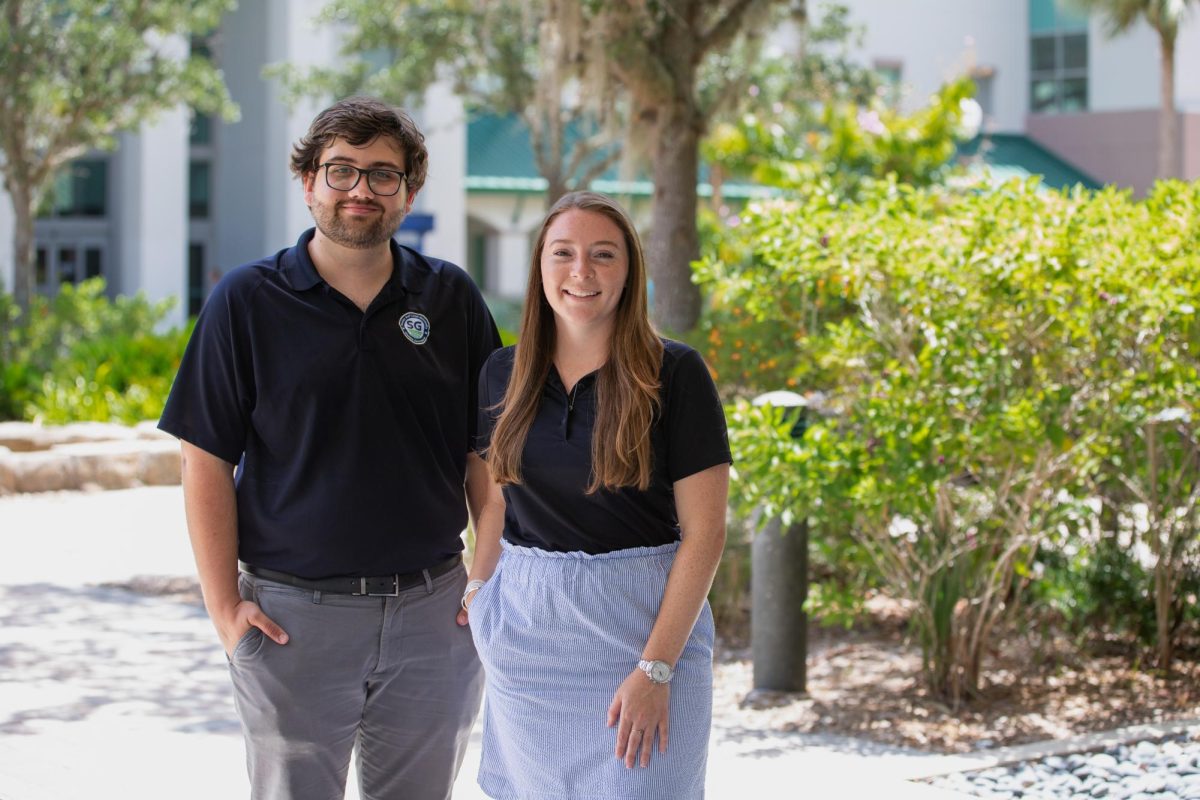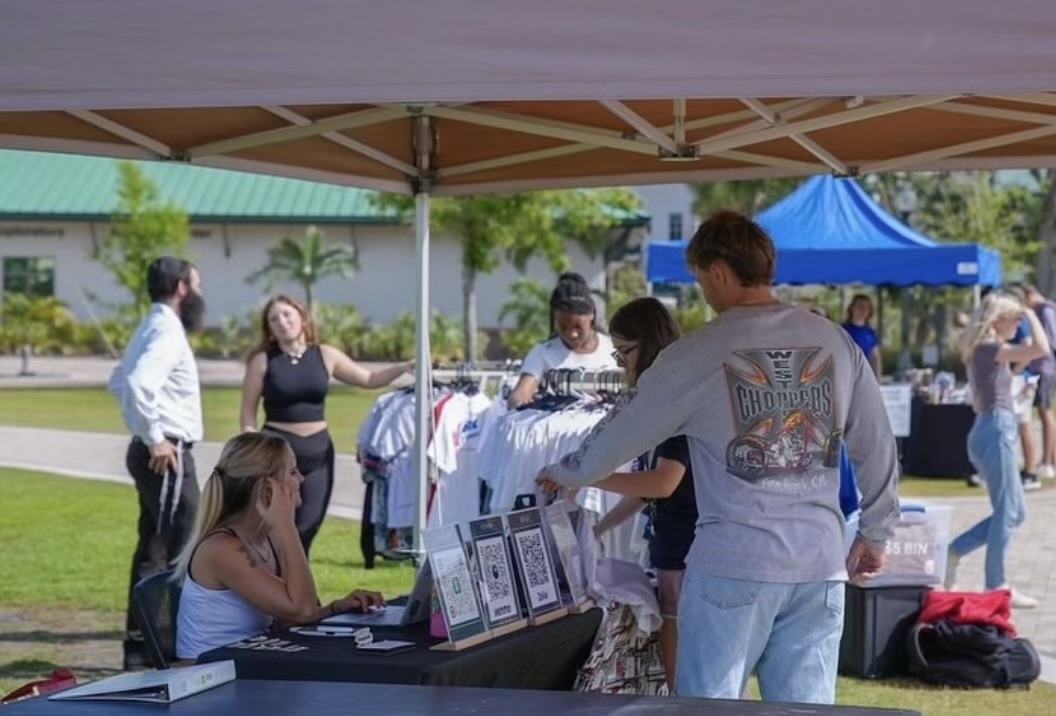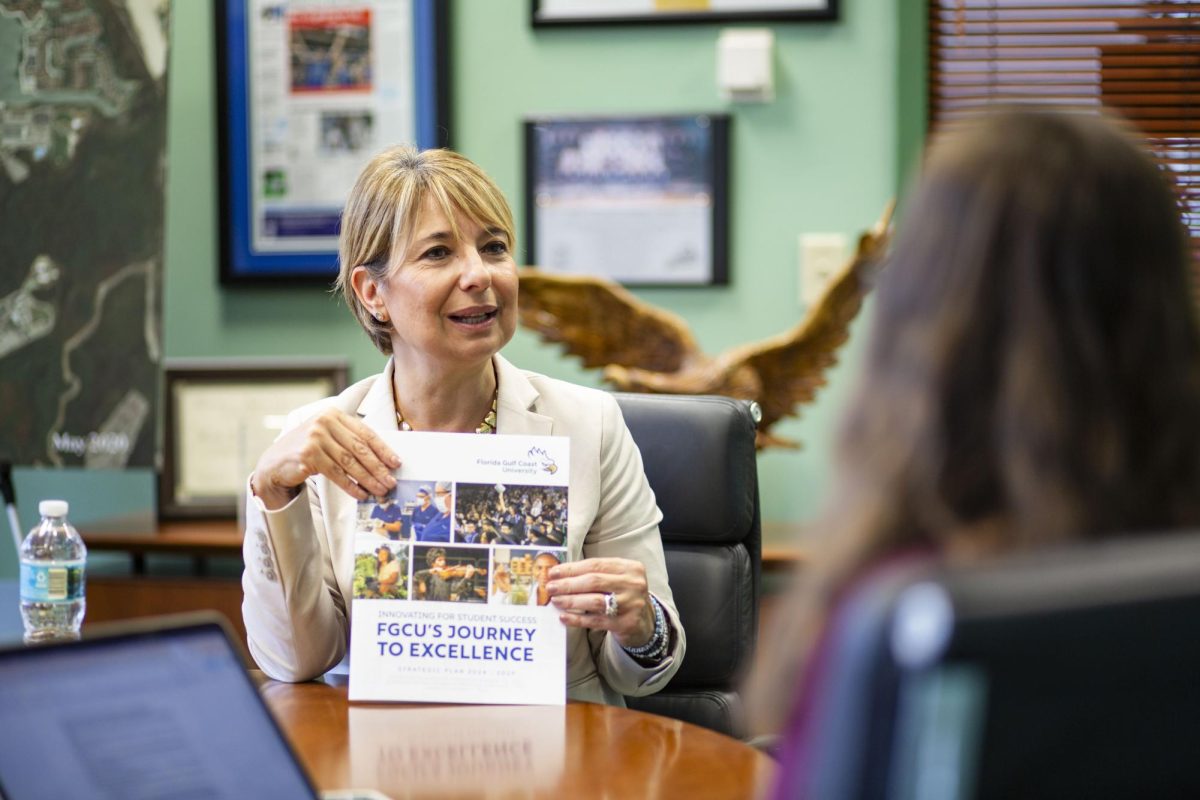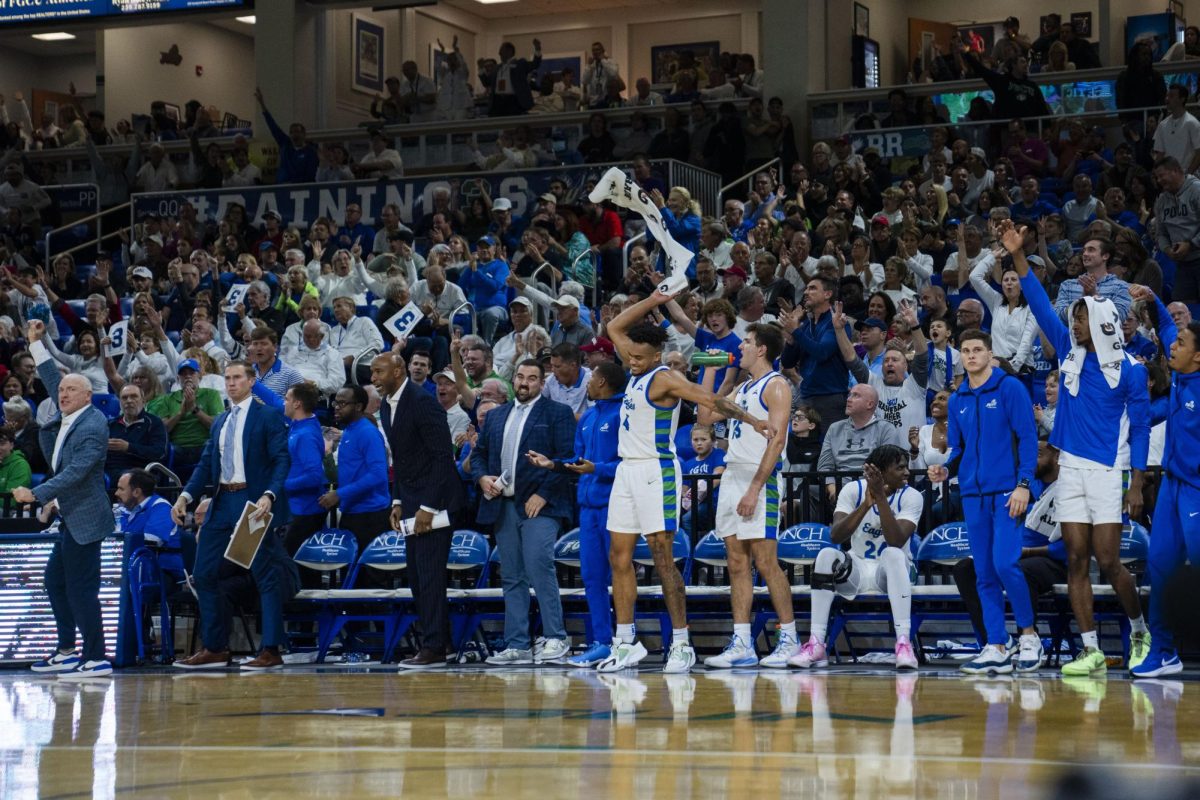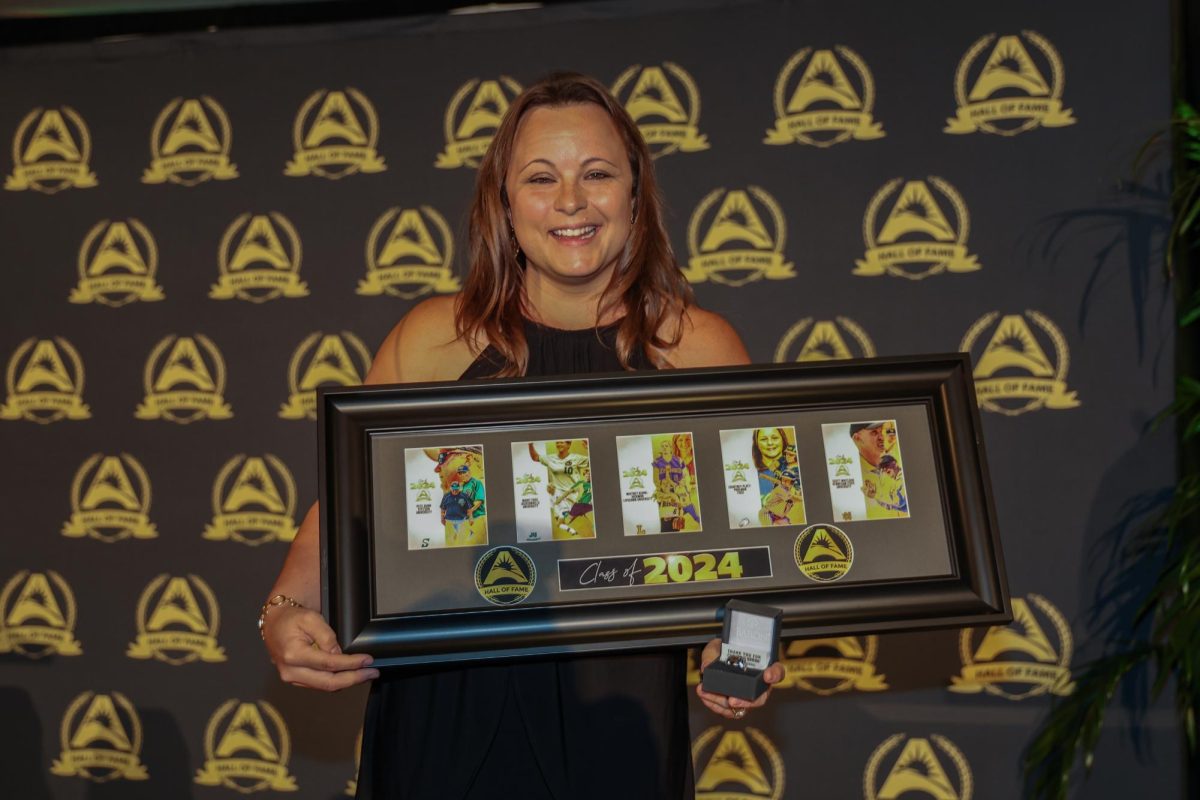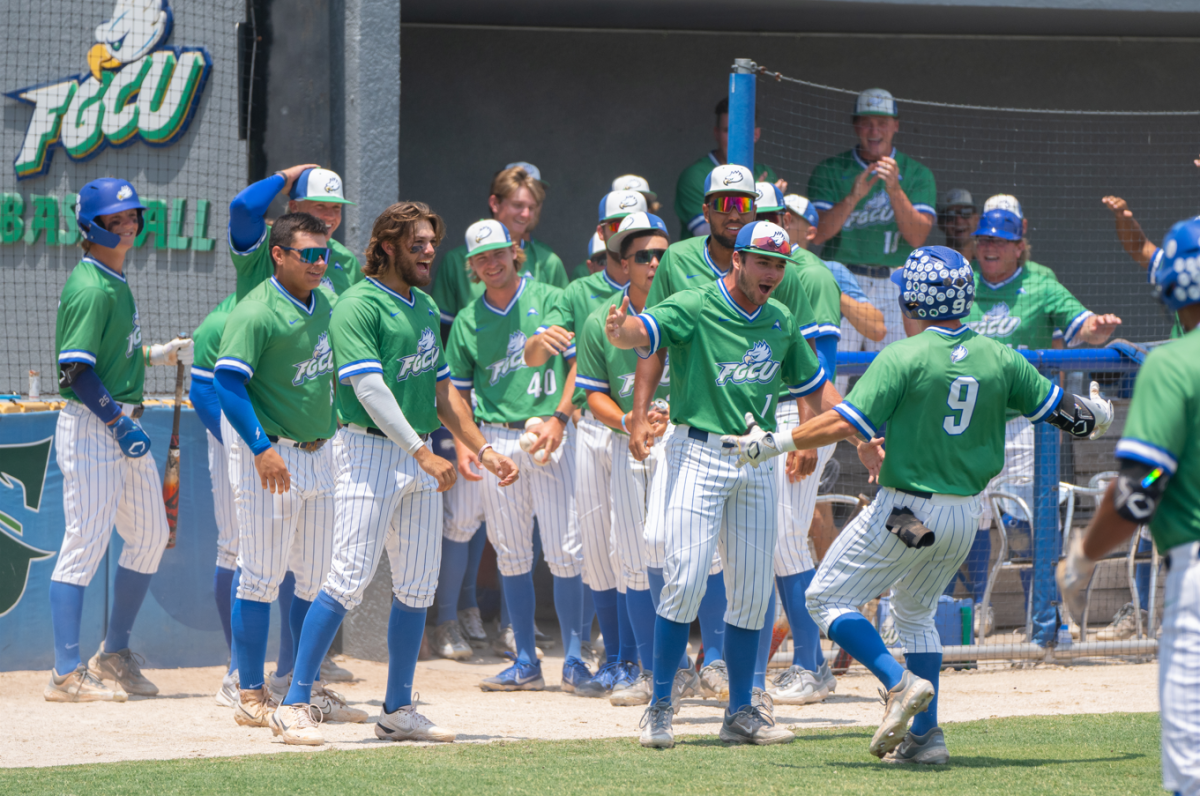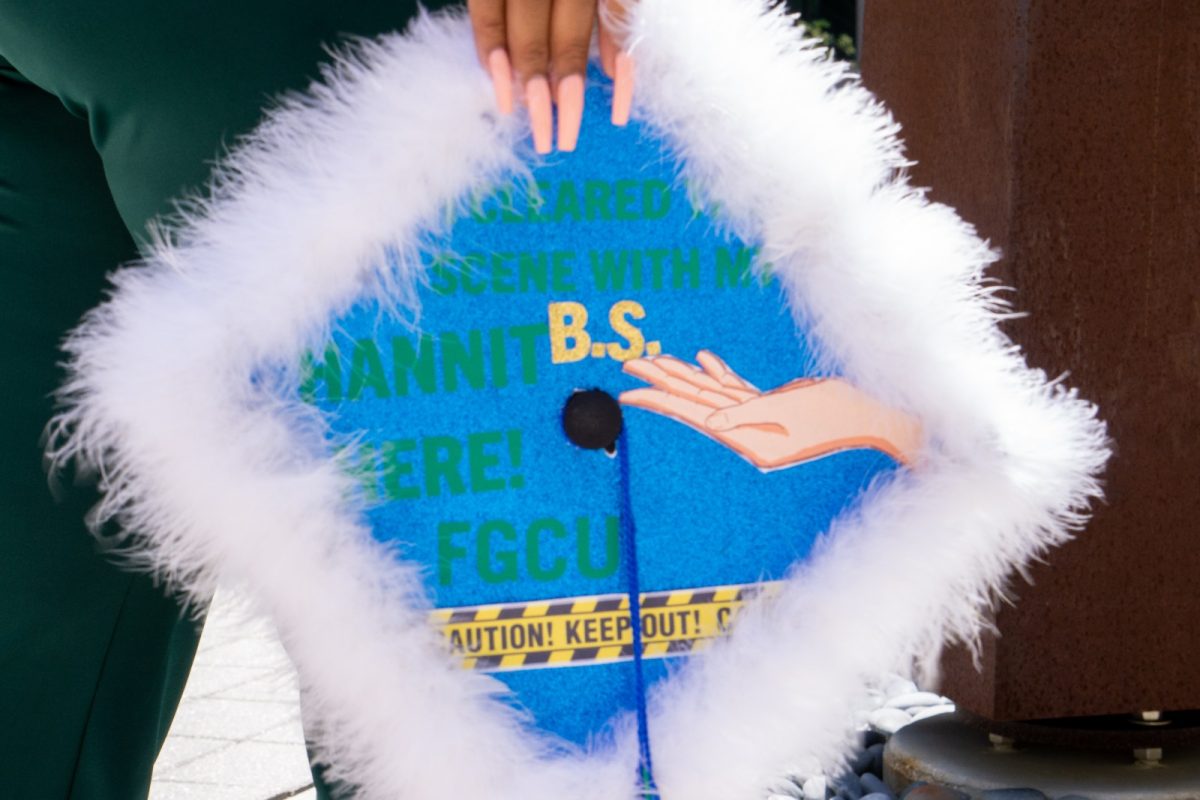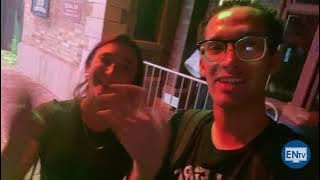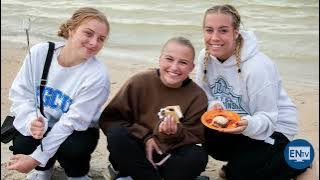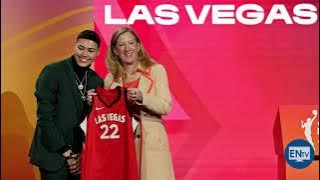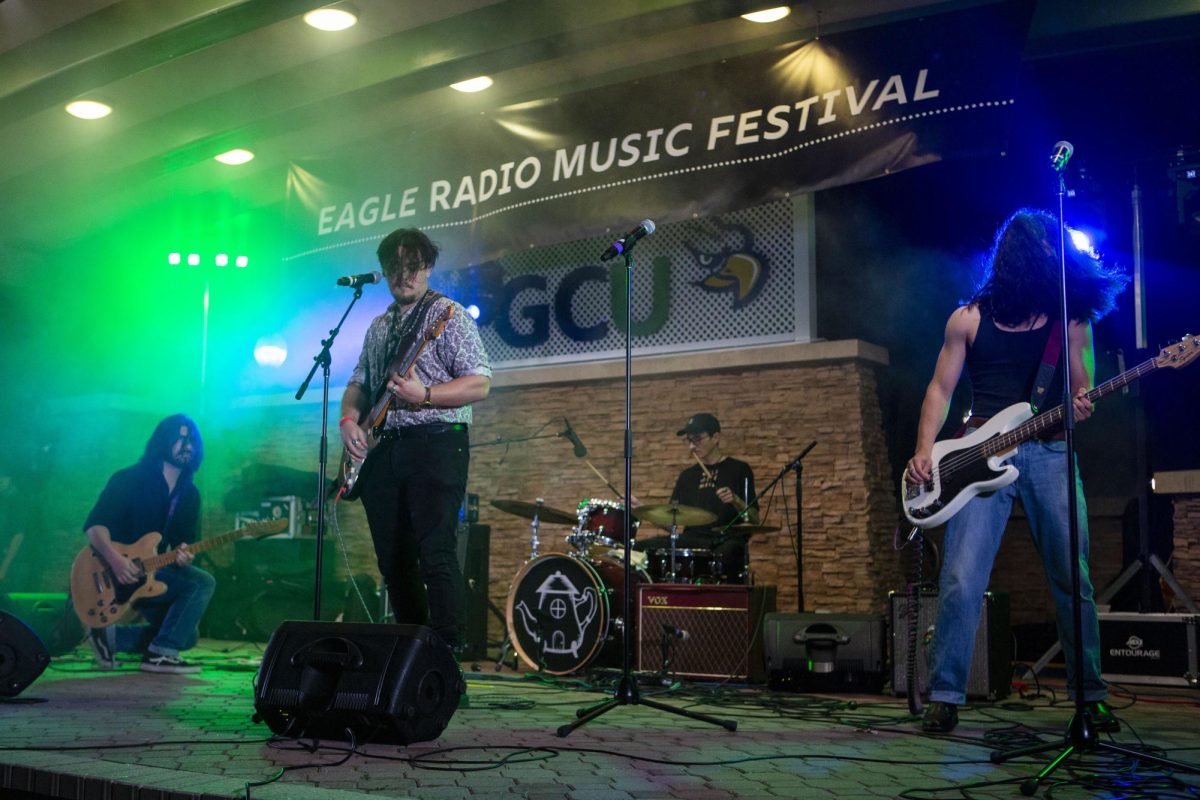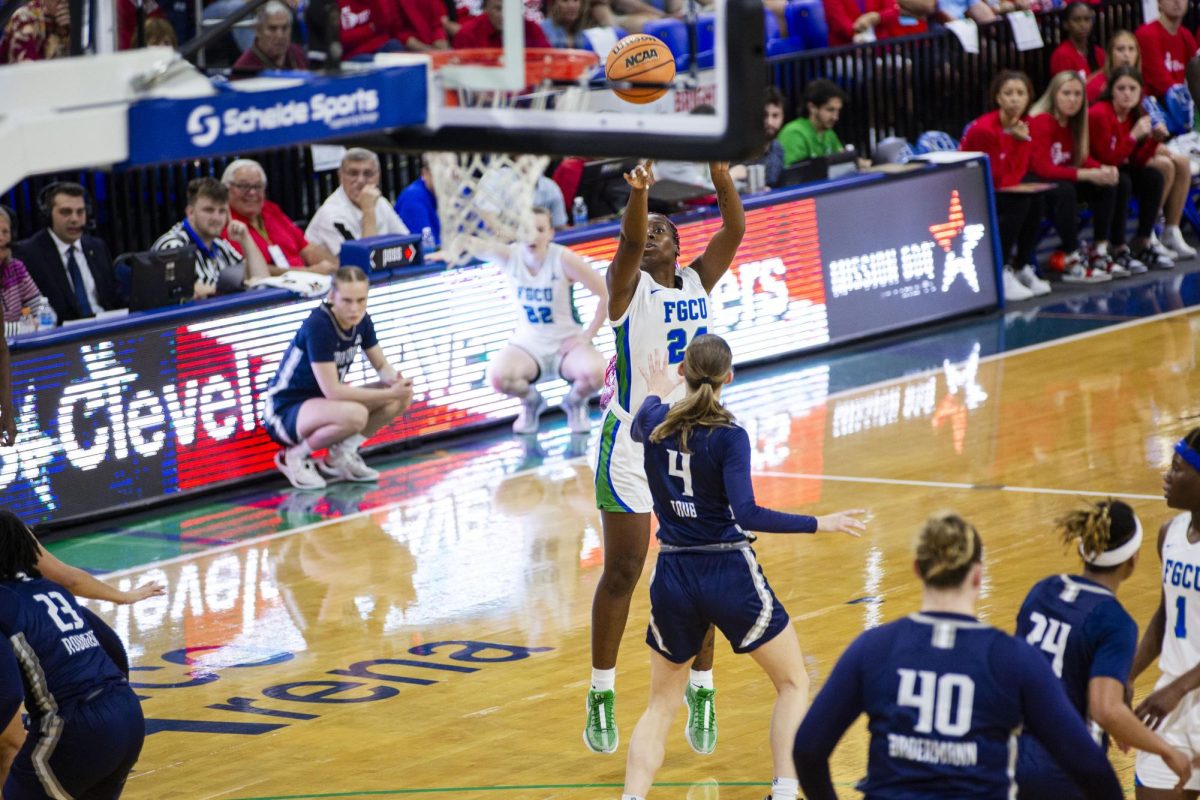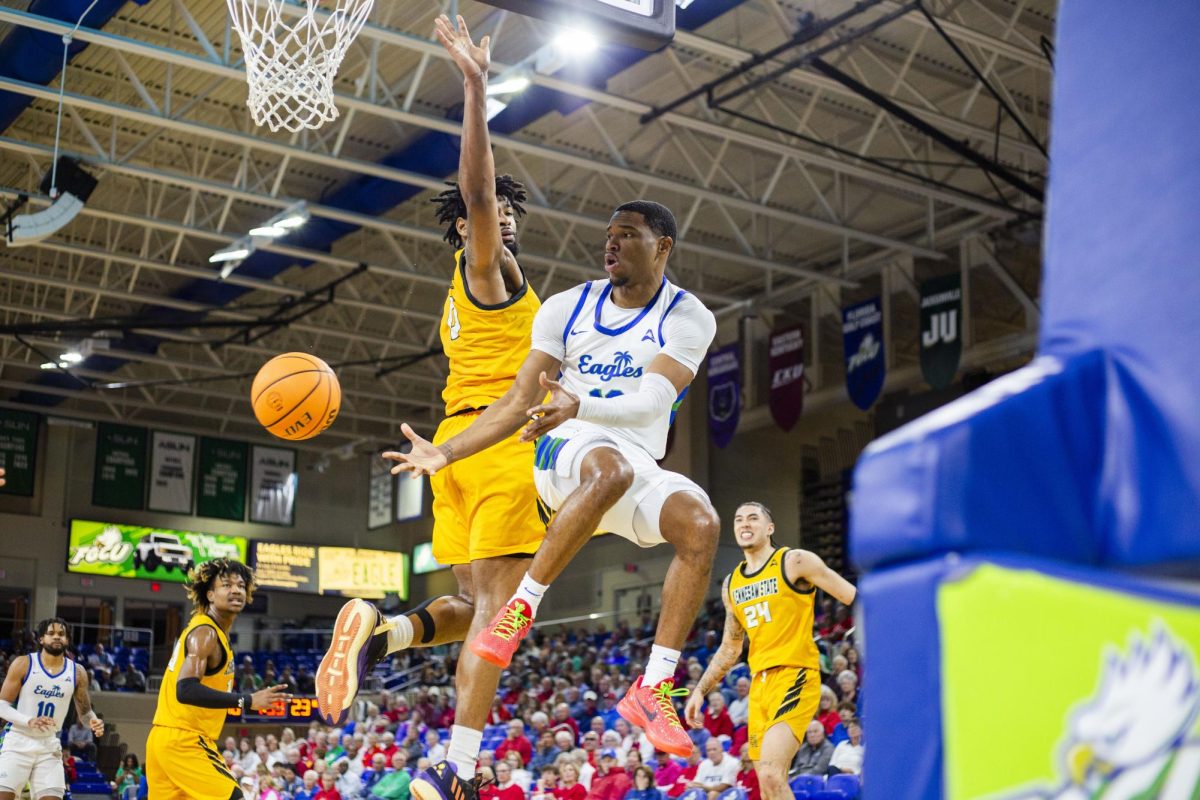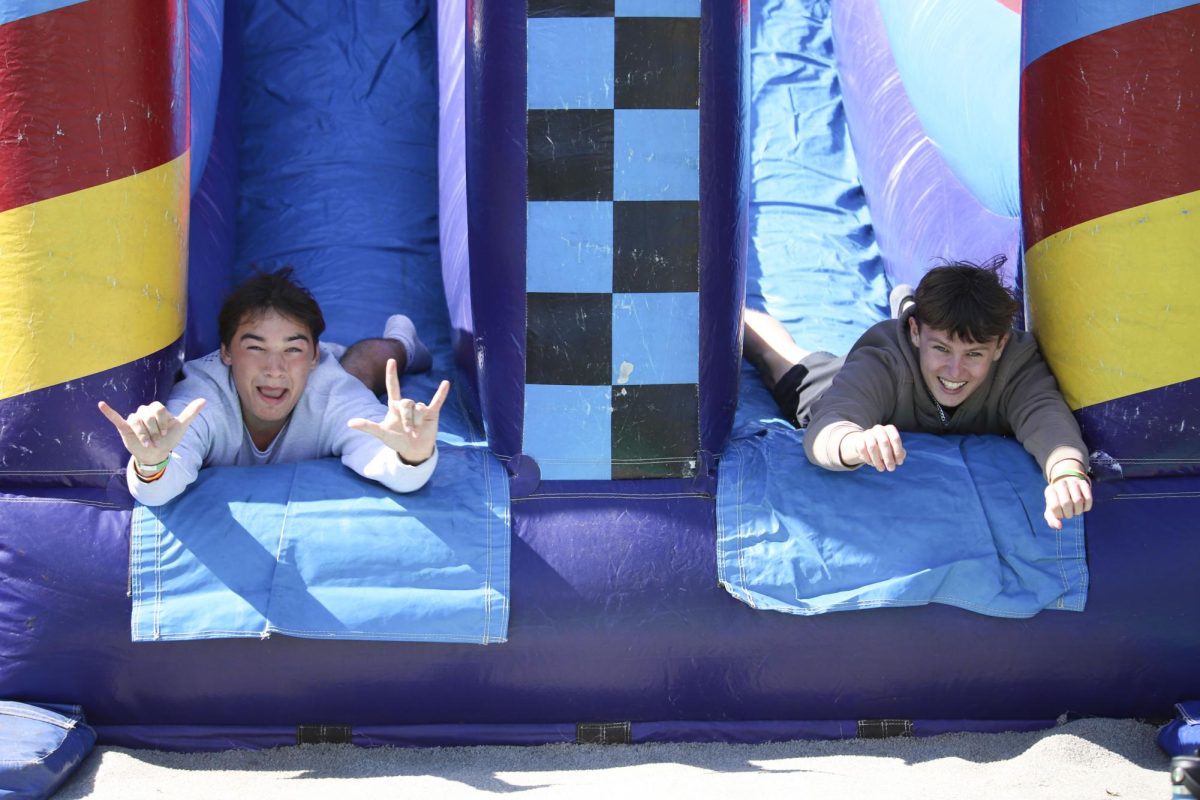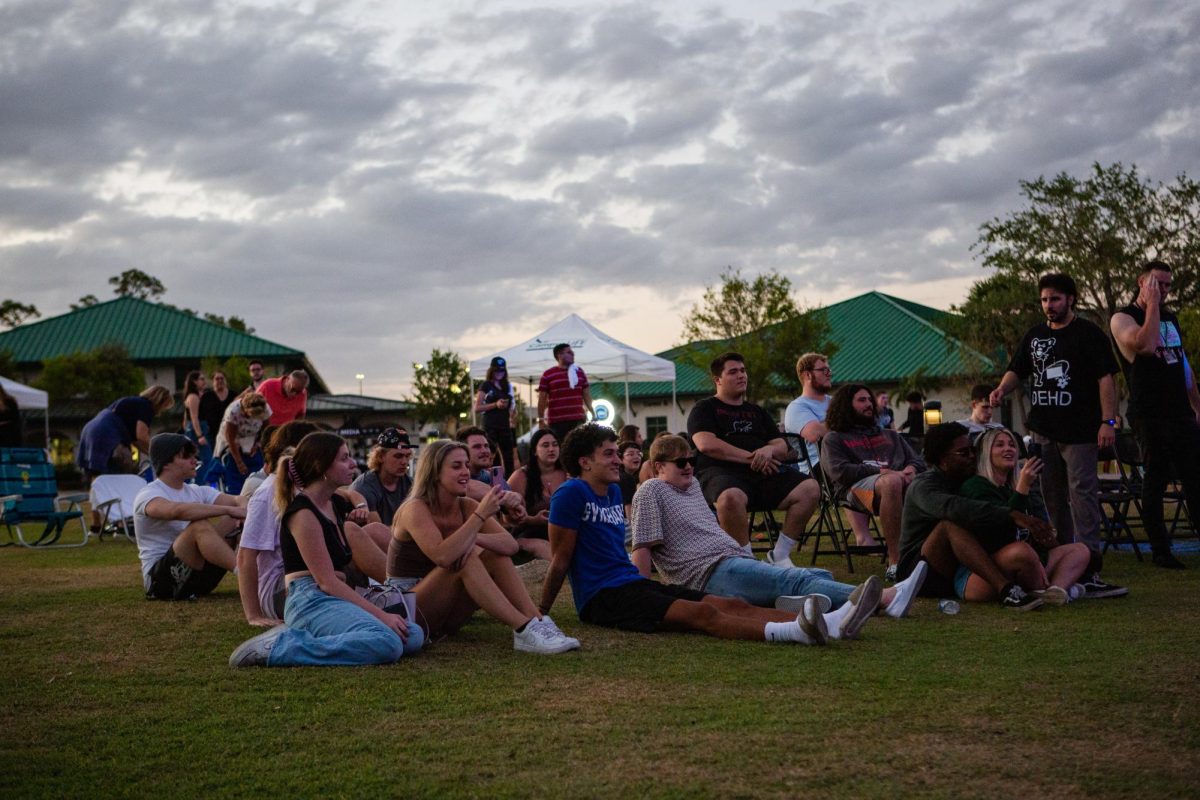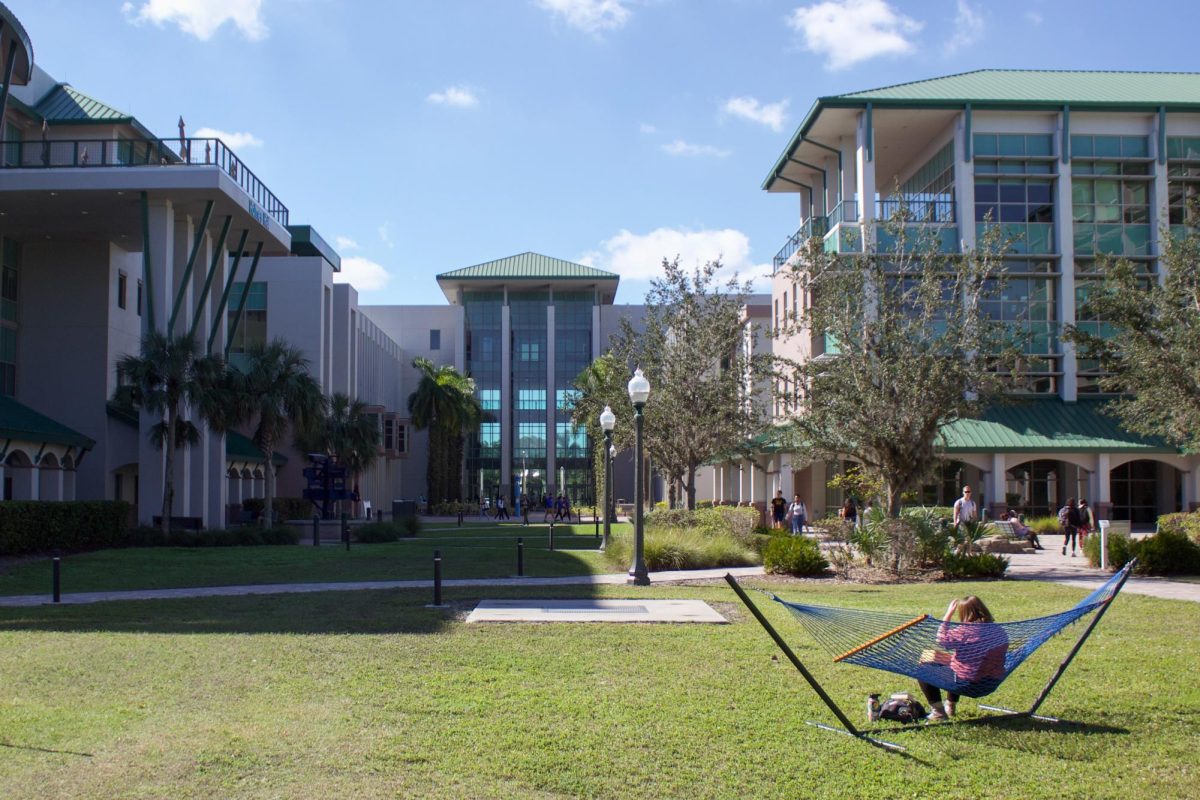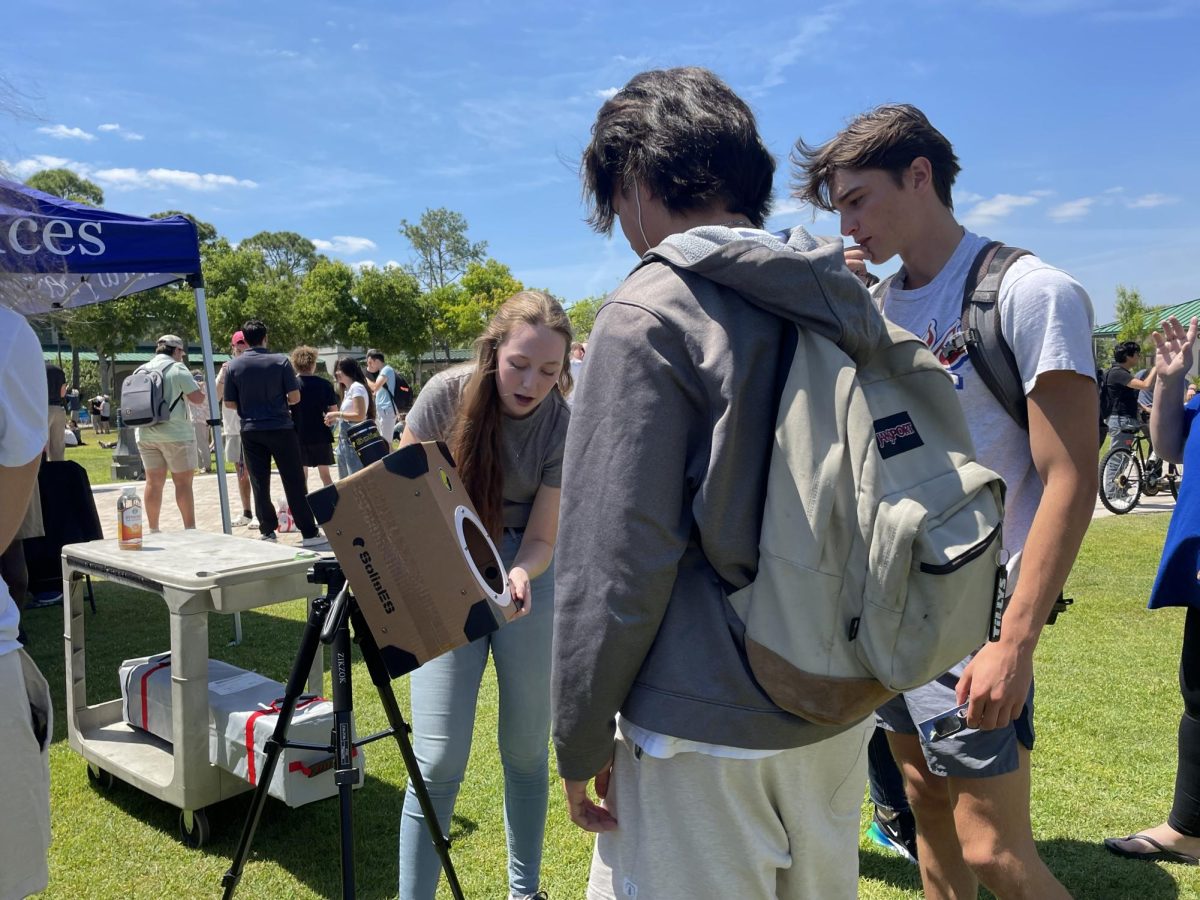When Chris Hamstra’s wife wants to get his attention from another room, she turns to a golden Labrador retriever named Hero for assistance. With one command, “Go get Chris,” the dog knows to find his owner and tap him on the leg with his nose. Once Hamstra notices Hero’s notion, the dog walks away expecting him to follow.
When Hamstra was just 10 months old, he contracted meningitis. Although he survived the infection, his hearing did not. The Bradenton native has been legally deaf ever since, only vaguely able to hear loud noises with the help of a powerful hearing aid.
Although he cannot hear, Hamstra is fluent in American Sign Language (ASL) and in reading lips. He can also communicate verbally, speaking clear, concise English that can be understood by those who are unable to formally communicate with their hands. He is so good at communicating with anyone he encounters that he has made a career out of it.
After receiving his Master’s degree in Special Education with a focus in deaf studies from the University of North Florida, Hamstra moved to Cape Coral. Since then, Hamstra has spent the last 11 years working with deaf children at Allen Park Elementary in Fort Myers, and the last six teaching ASL to students at Florida Gulf Coast University. His classes are always very popular and reach their maximum capacity each semester.
“I enjoy the learning environment,” Hamstra said verbally and with his hands. “I love to see children and students smile when I’m animated. ASL isn’t just learning a language. It is learning a culture.”
According to the National Institute on Deafness and Other Communication Disorders, ASL is the third most widely used language in the United States, following English and Spanish. Hamstra attributes some of its growth to use in pop culture and on widely-viewed television shows such as ABC Family’s Switched At Birth. In his classes, Hamstra teaches students about famous people in the deaf community. He also has them go to events outside of FGCU that require his students to interact with deaf families in the community. However, this is only once the students are comfortable and somewhat fluent with the language.
“In the beginning we start out with things like the alphabet and finger spelling,” Hamstra said. “As we get more into the semester, the students pair up with partners and complete projects. They present information about themselves to the class using only sign language, so they tell us about their family and what their apartment looks like, or they use whatever type of vocabulary we are learning in that particular chapter. Then the next semester we do children’s books and song translations.”
This may seem intimidating to those who have never learned a foreign language before, but sophomore psychology major Stephanie Brown says that the classes are actually quite fun. Brown was enrolled in both of Hamstra’s classes, ASL I and II, and was present during Hamstra’s interview with Eagle News in case an interpreter was needed. Although it turned out that her interpreting services weren’t needed, she was excited to practice her skills and share her experience in Hamstra’s classes.
“It was so great,” Brown said. “The way he teaches, he goes out of his way to make silly faces. You learn to goof off in a constructive way, and he’s always teaching us fun facts as we go, like how football huddles originate from deaf culture. I learned so much, and the environment was completely hands on.”
Although Hamstra does like to show off his funny side, his animated faces are actually necessary for communicating in ASL. While every language requires different signals and movements to get a point across, usually they’re communicated verbally with differing vocal tones. This can be really apparent when someone is asking a question and the speaker raises the pitch of his or her voice. In ASL, however, questions are communicated by raising eyebrows, widening eyes and leaning forward.
“I’m a lot like Colin Mochrie, the comedian from “Whose Line Is It, Anway?” Hamstra said. “I’m flexible, fun, animated and I really care. Teaching here at FGCU is like stress relief.”
But teaching a language to people who are not familiar with it has its challenges. On Mondays, Hamstra has an interpreter, usually a former student, come to class in case there are language barriers.
“It can be hard to understand some of the questions people ask or the things they tell me,” Hamstra said. “Some people think I’m just hard of hearing, but my hearing aid only helps hear some noise and only if it is really loud.”
On the first day of Hamstra’s ASL I class this semester, junior psychology major Amanda Miller was surprised by Hamstra.
“He stomped his foot to get our attention,” Miller said. “Then he used the computer and typed what he wanted to communicate with us.”
Later in the class, Hamstra asked the students if they thought he was deaf, hard of hearing or able to hear.
“He told us he was deaf and proud of it,” Miller said. “He then typed that he could speak and introduced himself verbally. I had no idea that the professor would be deaf. I thought he might be an interpreter, but I think him being deaf makes if better because we are learning ASL from someone who uses it every day to communicate with others.”
Moments such as this are some of Hamstra’s favorites. He explained that he likes to start out as somewhat of a mystery when he first meets his students. Then, as his classes learn more from each chapter, he reveals relevant information. So each week when students learn new information, such as how to talk about different sports, they will learn things about Hamstra’s athletic history and his time competing in the Special Olympics soccer tournament. Each class period is like an adventure, keeping students invested in the education they’re paying for.
“I really enjoy my job,” Hamstra said. “The best and worst part is that the students are always wanting more. Right now we only offer ASL I and II, but many other universities offer ASL III and IV as well. After our second semester together, my students always ask me about ASL III but we don’t offer it. I don’t know what the future holds, but I do know that I would definitely not mind teaching more. ”
Professor can’t hear his students, but he’s listening to everything they say
September 3, 2014
Story continues below advertisement


